 Diver Silhouette by Tim Sheerman Chase
Diver Silhouette by Tim Sheerman Chase
Summer continues, and so does our series of articles about opportunities for enjoying water sports in and around Vancouver. Last time, we gave you some tips about where to go for a little more adrenaline with kiteboarding and windsurfing. This time, the adrenaline rush continues with rafting, but we also bring you essential information about diving in the Vancouver area. So let’s hit the ocean and lakes for some real fun!
Diving
Hand-feeding friendly eels and encountering giant Pacific octopi and many other sea creatures: these are just two of the things offered from diving around Vancouver. History of diving began when people started to dive to acquire pearls from the bottom of the sea 6500 years ago. First diving suit was invented by Augustus Siebe in 1839 and more than 100 years later enhanced by Jacques Cousteau and Emile Gagnan who developed aqualung, apparatus commonly known as SCUBA. Canada, as a perfect combination of country with both fresh-water areas and the ocean quickly became one of the world’s most popular places for scuba diving. British Columbia is “second only to the Red Sea”, according to Jacques Cousteau himself!
Equipment
 Scuba Diving Equipment by Nazir Amin
Scuba Diving Equipment by Nazir Amin
The equipment for diving varies, depending on the time of year you’re diving, type of water, and things you want to do while diving. The equipment for diving in B.C. usually consists of the wear used in colder waters, since the water temperature varies from m 8-12C/46-53F. Here is the list of the things you’ll need to start:
- Diving Cylinders
- Diving Regulators
- Wetsuit or Drysuit !
- Neoprene Diving Gloves
- Neoprene Diving Boots
- Safety Helmet with lamp (depending on the location of your dive)
- Backplate for the diving cylinders
- Dive Weighting to offset wetsuit buoyancy
- Dive Fins
- Compass, Depth Gauge and Diving Watch
- Distance line to follow back in poor visibility (the best visibility in B.C. occurs in fall and winter)
For the basic instructions on how to ensemble the diving equipment, check out this video.
Diving Certification
What is the diving certificate and when do I need it? If you’re not going to dive on your own, and you’re planning to use services of diving schools all the time, you can skip this part. However, if you’re planning to dive on your own, you need to obtain your certification in one of the diving schools accredited by the Diver Certification Board of Canada (DCBC).
Diving Schools

Diving Training by
Ocean Quest Water Sports
Here are some of the best diving schools in Vancouver B.C.. Here you can not only learn how to dive, but they offer equipment rentals as well.
- Dive & Sea Sports
- Ocean Quest Water Sports
- International Diving Center
- The Diving Locker
- Ocean Pro Divers
These are the schools in B.C., that obtained accreditation by DCBD to hand out diving certifications for commercial diving as well.
B.C. College of Diving (Sidney)
Diving Dynamics (Kelowna)
Diving Locations

Giant Pacific Octopus by
National Oceanic and
Atmospheric Administration
Shore Dives
You can find shore dives with very mild currents, diving locations are very easily accessible both from Vancouver and Squamish in these places:
- Sunshine Coast: Sunshine Coast is British Columbia’s best kept secret, stretching along 180km of land from Gibsons to Lund. You can watch a footage from diving in Sunshine coast here.
- Howe Sound: Mild climate is ideal for diving all year long, many Vancouverites come here for one day trips, ideal for families. For the map of the region with diving sites click here.
- Powell River: Extremely clean water and proximity of many other diving sites make Powel River an ideal all-weekend-diving destination.
- Sechelt: There is a vast variety of sea creatures, such as giant Pacific octopi, starfish, and jellyfish. Close encounters with playful porpoises, sea lions and seals will make this place one of your favourites.
Artificial Reefs and Wreck Dives
-
Saltery Bay Provincial Park: The Emerald Princess dive, a 2.7m/9ft bronze mermaid statue located in Mermaid Cove.Wreck Diving by TS Lane
- Powell River: Dive to discover the Malahat, a five-masted wooden schooner.
- Porteau Cove Provincial Park: A 41m/136ft wooden wreck of minesweeper Nakaya.
- Sechelt Inlets Marine Park: Wreck dive for ex-navy-destroyer HMCS Chaudier, a 112m/366ft long wonder.
For more information, check out various scuba diving forums where you can find a lot of good regarding equipment, schools, but mainly locations!
RAFTING
 Nahatlatch Rafting by REO Rafting Resort
Nahatlatch Rafting by REO Rafting Resort
Last but not least, one of the most exciting and adrenaline-fuelled water sports: rafting. BC offers plenty of rivers where you and your friends can go rafting with one of the finest rafting instructors in Canada. Wondering how to bond with your team at work? Rubber rafts and wild water can become one of the most exciting team-building activities you’ve ever tried!
The rubber river raft was invented in the early 1840s. It was first made by Lt. John Fremont and Horace H. Day. They invented the rubber raft with the intention of surveying the Rocky Mountains and the Great Plains. Private companies played a huge role in the popularization of the rafting business. In 1956, John D. Rockefeller built a resort that introduced the one-of-a-kind project of floating rafts at that time. However, it didn’t have great success. In the 1960s and ‘70s, specialized whitewater rafting companies were formed. If you’d like to read more about the history of rafting, especially in British Columbia, you might be interested in a somewhat older but very interesting book, Rafting in British Columbia.
Equipment

Kicking Horse River Rafting by
Glacier Raft Company
The equipment for river rafting is a bit of a simpler matter than for diving. The variations in the equipment depending on the season are optional, and since most of the rivers in BC are quite cold all year long, it’s wiser to dress up properly.
- Paddles/Oars
- Dry boxes (if you plan to stay on the raft for days without meeting up with your accompanying car)
- Helmets
- Life jackets (for instructions on how to wear a life jacket properly, check out this video)
- Neoprene boots
- Wetsuit or drysuit
- Air pump
Types of Rafting Trips and Need-to-Knows
Whitewater rapids are rated on a scale of 1 to 6. Rivers receive ratings based on a combination of difficulty and danger, where class 1 rapids are the least difficult and class 6 rapids are the most difficult.
All gear is typically provided by the rafting company, but check before you go to find out what to wear and what to bring with you.
Always arrange your rafting trip with a licensed rafting company because you might find yourself facing huge fines from the local government. Also, remember to book your trip in advance, since they tend to be sold out weeks ahead.
Kids over ten are usually old enough to go on milder levels of whitewater; higher levels are suitable just for children over 16. Always check with the rafting company whether you can bring your children along. If they’re too young, you may consider booking a motorized or float trip — these are usually accessible for all ages.
Rafting Companies and Schools
-
Hyak Wilderness Adventure: Offers one to eleven-day trips to the North of Canada, Alaska, and the Yukon.
Elaho Exhilarator Whitewater Rafting by
Canadian Outback Adventures - REO Rafting Resort: Offers various levels of difficulty: on the Nahatlatch River (Classes 3-4), Stein (Class 5), Thompson (Class 3), and Fraser River (Classes 1-2).
- Canadian Outback Adventures & Events is the company to go to when you want to organize something like the aforementioned team-building adventure on wild water.
- Alpine Rafting: Company focusing on Kicking Horse River, offering afternoon, ultimate whitewater, and family packages.
- Glacier Raft: In Fairmont Hot Springs, BC Glacier Raft Adventures offers family whitewater rafting on glacier-fed Toby Creek. Their evening nature float trips on the Columbia River are suitable for all ages.
Locations
Squamish: A day trip on the rapids of the Elaho and Squamish rivers goes past glaciers and waterfalls. For a milder adventure, there are half-day float and photography excursions available down the Lower Cheakamus and Squamish Rivers.
Whistler: A half-day trip with instructional training down the Green River is the perfect introduction to paddle rafting. For more experienced rafters, whitewater opportunities exist on the Birkenhead.
Chilliwack River: Located in the foothills of the Cascade Mountains, it offers ideal routes for beginners.
Fraser and Nahatlatch River: North of the town of Hope, the Fraser River offers a trip through the legendary Hell’s Gate! The Nahatlatch River will take you through the highest levels of rafting passages, recommended only for skilled rafters!
Lytton: Famous Class 3-4 rapids such as the Frog, Devil’s Kitchen, Cutting Board, and Jaws smoothly change into kilometres of calm water, very suitable for one-day trips.
Stein River: This is the steepest commercially-rafted river in Canada, with a drop of 27m per km/145ft per mi, and is also one of the only commercially-rafted Class 5 rivers in BC!
What’s your favourite water sport? Where is your favourite place to go rafting or diving?

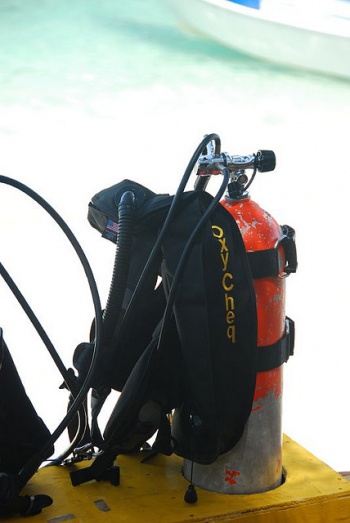
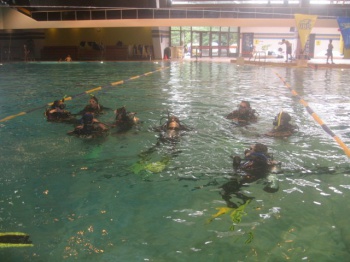
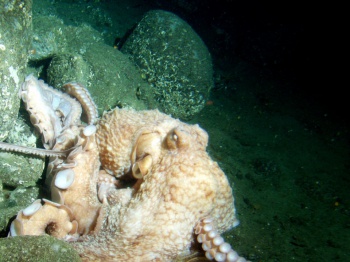

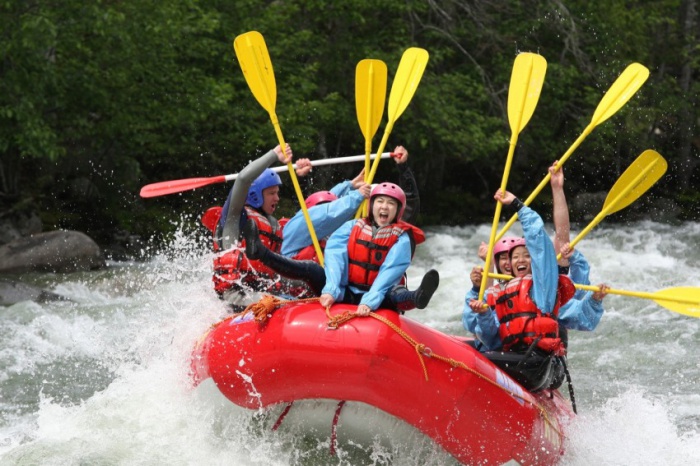
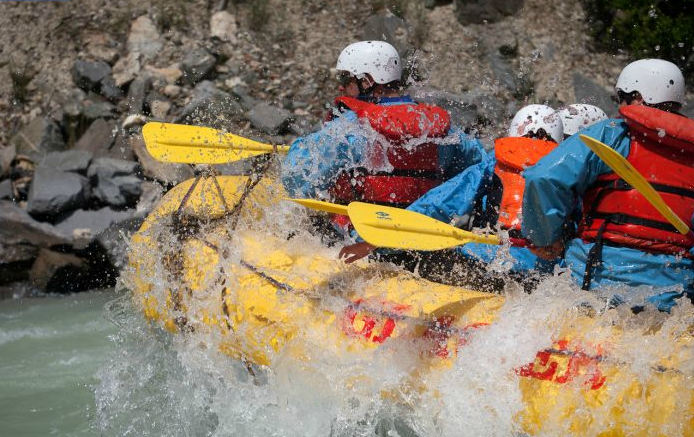
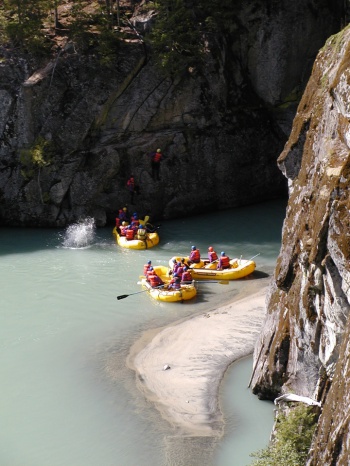
Scuba diving is one of my biggest passions. The main reason I love diving is the adventure, because you never know what you will found below the water surface. I use the https://dive.site map to find new diving spots and the logbook to keep track of my dive adventures.